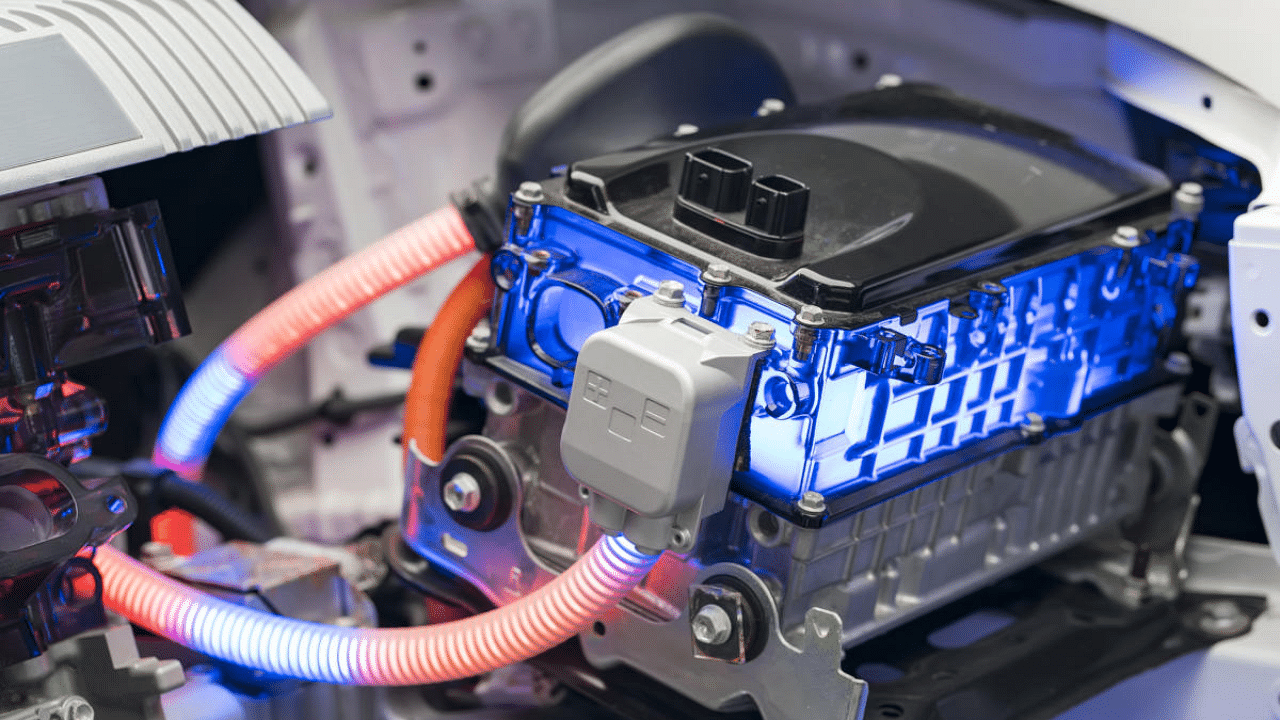
Traditional lithium-ion batteries continue to improve, but they have limitations that persist and this is in part because of their structure. A lithium-ion battery consists of two electrodes — one positive and one negative — sandwiched around an organic (carbon-containing) liquid electrolyte. As the battery is charged and discharged, electrically charged particles (or ions) of lithium pass from one electrode to the other through the liquid electrolyte.
One problem with this design is that at certain voltages and temperatures, the liquid electrolyte can become volatile and catch fire; and another is that lithium-ion batteries are not well-suited (in their current form factor) for use in electric vehicles (EV).
Large, heavy battery packs take up space and increase a vehicle’s overall weight, reducing its fuel efficiency.
Researchers are thus changing key features of the lithium-ion battery to make an all-solid or “solid-state” version. In this, they replace the liquid electrolyte in the middle with a thin and solid electrolyte that remains stable at a wide range of voltages and temperatures.
With the solid electrolyte, they use a high-capacity positive electrode and a high-capacity lithium metal negative electrode that is far thinner than the usual layer of porous carbon. Those changes make it possible to shrink the overall battery considerably while maintaining its energy storage capacity, thereby achieving a higher energy density. These features — enhanced safety and greater energy density — are probably two of the most-often-touted advantages of a potential solid-state battery.
EV batteries undergo tremendous stress during their long life. The two leading stressors are fast charging and extreme temperature. The battery’s capacity to accept charge varies significantly with temperature.
Traditional battery management systems (BMS) do not adjust the degree and rate of charge based on health. Temperature gradients across the pack cause uneven degradation, especially during fast charging. Therefore, any one of the hundreds of cells in the battery pack can develop an internal short and ignite the whole pack.
There are two ways to improve battery safety for safer EVs.
1) Develop safer cell chemistries: Considerable research and investments are pursuing new technologies. An intelligent approach would be required to control the degree and rate of charge in real-time based on detailed diagnostics of the cells and the pack.
2) Deploy software intelligence: This can be done in order to predict the rare presence of defects and ensure that the batteries operate safely. The predictive safety software stack is essential to identify the rare battery defect before they lead to a fire.
We believe that intelligent software with predictive capabilities is essential to provide additional safety safeguards. Moreover, the technology is available today and can deliver the required safety at a significantly reduced cost.
Failures can appear suddenly and violently, with the potential of severe injuries, product recalls, and loss of reputation. Thus, it is crucial to invest in software intelligence to monitor battery diagnostics and predict the presence of defects, and be prepared to remove hazardous batteries from circulation before they lead to catastrophic incidents.
(The author is the vice-president of Transport business unit for Exide Leclanche Energy Pvt Ltd Nexcharge)
Watch the latest DH Videos here: